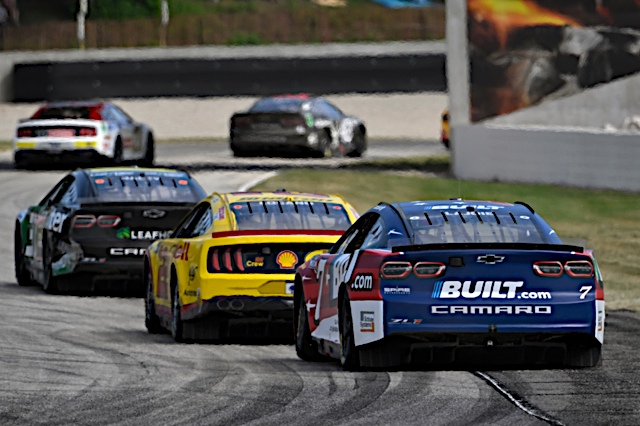As Frontstretch‘s resident road racing expert, I love the twisties. You never know what you’re going to get. At a place like Road America, the sheer magnitude of the facility means that you never know what’s going to be thrown your way.
Kwik Trip 250
Honestly, I really wasn’t sure what to expect going into this past weekend’s action at Road America for the NASCAR Cup Series. This is where the power cut really comes into play as the cars just seemed gutless at times. It’s likely part of the reason why the race had no natural cautions.
While 670 horsepower is definitely a lot of power for the average driver — personally, I’ve never driven anything with more than 305 (that was a V6 Mustang rental car I had in Daytona back in 2013) — this was an 80 horsepower cut as compared to the Gen6 car last year at non-superspeedway and intermediate tracks. It’s harder to spin the tires.
Pre-race coverage had a series of interviews, along with a couple of cutaways to Rutledge Wood, where he talked a bit about the history of racing in Elkhart Lake, Wis. Essentially, the beginning of racing there is very similar to what happened Watkins Glen around the same time, but doesn’t get as much press.
With only two cautions for the stage breaks, the leaders (Chase Elliott, Tyler Reddick) got way out in front of the rest of the field. In that scenario, without much happening up front, you need to drop down through the field and provide viewers with as much action as you can. That didn’t really happen on Sunday. There were long stretches of time with next to no action.
Now, it is possible that there wasn’t much going on. It’s also possible that the sheer size of Road America meant that there wasn’t enough camera coverage to see everything. Heck, there isn’t enough spotter coverage there due to the shrunken crew rosters. Based on what I could tell from the Virtual Media Center that NASCAR offers to media members and the on-screen pylon, there was action to be shown, but we didn’t get it.
Sunday’s race also saw the use of a streamlined pylon from time that omitted driver names and just used the car numbers. Think of a more modern version of ESPN’s pylon they used on NASCAR broadcasts from late 1995 to early 1998. I thought it was interesting and would not mind additional usage of it. I’d like your thoughts on it.
A race at Road America seems to have a lot more commercials than other tracks since the laps are so long. It’s possible to…
Click Here to Read the Full Original Article at Frontstretch…

